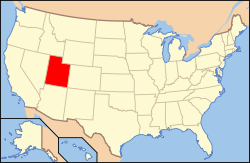
As a business owner in Riverton, Utah licensing is a great way to expand your business. However, licensing is a very complex issue and you should seek the assistance of an experienced Riverton Utah corporate lawyer. This will ensure that your rights are protected at all times.
Contractual Restrictions on Exclusivity
One method often used to control the risks you might feel comes with the grant of an exclusive license is to restrict the scope of the exclusive rights in some manner. For example, a licensor may restrict exclusivity by limiting it to that period of time necessary for the licensee to achieve the desired advantage of being the first in the market with the product or technology covered by the license. This strategy may be appropriate when it is anticipated that the licensee will expend substantial amounts on promoting and distributing the product or technology. Once this initial investment has been recovered, or the licensee has had sufficient time to realize the benefits of its distribution strategies, the licensor will hopefully be able to enter the market directly to obtain additional royalties through the grant of other licenses.
When limitations are imposed on the duration of an exclusive license, a number of different measures can be utilized. For example, the restriction can be expressed in terms of a specific period of time, such as two or three years. On the other hand, exclusivity may terminate when the licensee has had the opportunity to recover all or a specified portion of its original investment as measured by the amount of revenues realized by the licensee from the sale of the product or technology or the amount of royalties received by the licensor from the activities of the licensee.
Even when exclusivity is expressly limited to a fixed period of time, the licensor should insist upon including provisions that the exclusivity will terminate prior to the end of the period in the event that the licensee fails to meet certain minimum goals with respect to sales or royalties. Minimum performance conditions will protect the licensor from a situation where the licensee may choose to abandon the rights prior to the end of the initial period set out in the license and allow the licensor to begin exploitation of the market itself or select another licensee for that purpose before the competitive advantage disappears.
Another way to limit the effect of exclusive rights is to grant rights that are exclusive only as to specific products or geographic areas, but non-exclusive in all other respects. This type of arrangement makes sense when the licensee has particular strengths in the areas of exclusivity, such as a large and proven chain of distribution or a reliable reputation with respect to similar products. Similarly, exclusivity may be restricted to one or more markets within a specific geographic area, such as when a licensor retains the right to distribute products to national accounts, while the licensee is granted an exclusive right to sell to all other potential customers. A dual distribution strategy of this type will not usually violate the antitrust laws if it is reasonable and not unduly restrictive of horizontal competition.
Performance Conditions for Exclusivity
In almost all cases, the ongoing exclusivity of a license grant will be conditioned upon continued satisfactory performance of the licensee in relation to specified measures included as part of the license agreement.
Development of Technology
The licensee may be obligated to reduce the licensed rights to practice or complete development of an improvement to the technology by a certain date. A duty of this type ensures that the licensee will actually expend the funds required to position the technology for sale in the designated market. Moreover, the licensor may be depending upon the right to acquire and use any improvements in its own internal efforts.
Establishment of Distribution Channel
When the license pertains to a distribution relationship, the licensee may agree to establish a certain number of dealerships or agents by a certain date. A standard of this type evidences the willingness of the licensee to distribute the product; however, it does not guarantee that anticipated revenues from sales will be realized.
Development Expenditures
The licensee may be required to expend certain minimum amounts for further development or improvement of the licensed technology or for the promotion of the various products and services included in the license. This type of standard ensures a minimum degree of commitment on the part of the licensee; however, it does not guarantee that the development will be successfully completed. Moreover, a duty to make specified expenditures may terminate upon the obsolescence of the licensed technology.
Revenue and Market Share Milestones
Perhaps the most frequently used method for evaluating the performance of exclusive licensees is to require that the licensee meet specific revenue objectives or minimum royalties or, alternatively, capture a given minimum share of the target market for the licensed products. If a minimum royalty hurdle is used, the licensee should be prohibited from making payments other than out of product sales, since the object of the exclusivity is to penetrate the target market.
Legal Consequences of Exclusive Licensing
The grant of an exclusive license can have significant legal consequences for both parties. First of all, an exclusive license may be subjected to careful review under antitrust law in light of the potential adverse effect upon competition. Second, since the grant of an exclusive license is essentially an outright assignment of the licensed subject matter, it may be necessary to record the license in the appropriate governmental filing offices. Finally, at least in the United States, an exclusive licensee has the right to commence an action for infringement and join the licensor.
Most Favored Licensee Clauses
If the licensee obtains something less than an exclusive license to all markets and applications, it may insist upon inclusion of a “most favored licensee,” or “MFL,” clause in the license agreement. This type of provision will require that the licensor extend to the licensee the benefits of any terms included in subsequent license agreements covering the same subject matter. The most common item of concern to a licensee in seeking a MFL provision is the royalty rate charged to subsequent licensees. However, the scope of the MFL clause usually extends to all other material conditions set out in the license agreement.
MFL provisions are difficult to enforce and interpret for a variety of different reasons. First, the exact subject matter of the license, as well as the statutory protection available for the underlying technology in the area in which a new licensee resides, may be substantially different. Second, local restrictions and competitive pressures may differ in each area in which a licensing arrangement is created. Finally, certain benefits granted in a subsequent license may be coupled with obligations for the new licensee that might be more onerous than those included in the original license. In such cases, the right of the licensee to claim the benefits under the MFL clause generally is conditioned upon acceptance of the new obligations.
Given some of the aforementioned problems experienced in interpreting MFL provisions, careful consideration should be given to drafting the MFL clause. It generally makes sense to limit the effect of the provisions to comparable licensing situations and terms. For example, the MFL clause might be narrowly drafted so as to apply only to the grant of licenses in the same country, rather than to licenses granted in other jurisdictions. Also, the MFL provisions might apply only to royalty rates based on volumes of revenues or products comparable to those included in the original license agreement. In any case, a procedure should be included in the license agreement to attempt to resolve any dispute over the enforcement of an MFL clause before the entire relationship erodes.
Sublicensing and Assignment
A person who rents a property right from its owner will sometimes want to rent, or even sell, its rights as a renter to a third party. In the licensing context, the grant of a license by a licensee to a third party is referred to as a sublicense, and a sale or full conveyance of the licensee’s rights under the original license is usually referred to as an assignment. Sublicenses raise all of the same issues as the original license. For example, the licensee may sublicense all or only a portion of the legal rights the licensee received from the licensor. In contrast, the assignment of the licensee’s rights will generally terminate its interest in the licensed subject matter.
Obviously, the licensor will have some concern about any transaction, whether a sublicense or an assignment, that gives a third party the right to use and exploit the licensed technology. As a general rule, absent an expressed or implied agreement to the contrary, a license is not assignable, and the licensee has no right to grant sublicenses to third parties. However, there are often a number of situations where sublicensing may be essential to the success of the overall business relationship. For example, when the original arrangement contemplates that the licensee will manufacture and/or distribute the licensed technology or products that embody such technology, it may be necessary for the licensee to hire various subcontractors, consultants, distributors, dealers, or agents in order to properly exploit the licensed rights. In each case, it may be necessary to sublicense a portion of the licensed right to these persons or entities.
If the licensee is to be given the right to sublicense, the licensor will want to ensure that it has the ability to exercise adequate control over the number of licensees, the uses made of the licensed rights by the sublicensees, and the ability of the sublicensees to adequately protect the technical information embodied in the licensed rights. In addition, the licensor will want to understand how the grant of a sublicense will impact the overall economic relationship between the parties, particularly with respect to royalties paid to the licensee by a sublicensee. In many cases, the licensor can effectively manage sublicensing activities by either insisting on the right to review and approve the terms of every proposed sublicense or by providing that sublicenses may be consummated only in accordance with terms set out in a form sublicense agreement appended to the original license agreement.
Given the desire of the licensor to minimize the costs and risks associated with potential sublicensees, it is important for the licensor to clearly understand how the licensee intends to use the licensed. rights and the possible need for the licensee to engage one or more third parties. This analysis provides the licensor with a good opportunity to understand the licensee’s own internal capabilities, as well as the ability of the licensee to enter into the proper relationships within its own chosen market. If it appears that the licensee will need to enter into a number of sublicenses in order to fulfill the contemplated economic goals of the original relationship, the licensor may look to another party with more of the required resources under its own control.
A purported assignment of the licensed rights not only raises all of the issues attendant to a sublicense; it also constitutes a fundamental change in the original business relationship. In most cases, the licensee will be precluded from making any assignment of its rights under the license agreement, since the licensor will not want to agree in advance to substituting a third party as the one responsible for performing the licensee’s obligations under the license agreement. The limitations on assignment will generally extend beyond voluntary transactions to include various other fundamental changes relating to the licensee. For example, a merger or stock purchase involving the licensee that effects a change in ownership of the licensee may be deemed an assignment of the license. Speak to an experienced Riverton Utah corporate lawyer to know how you can grow your business through licensing. Whether you are the licensor or the licensee, an experienced Riverton Utah corporate lawyer can ensure that your business is protected when it signs a licensing agreement.
Riverton Utah Business Attorney Free Consultation
When you need legal help for your company in Riverton Utah, please call Ascent Law for your free consultation (801) 676-5506. We want to help you.
8833 S. Redwood Road, Suite C
West Jordan, Utah
84088 United States
Telephone: (801) 676-5506
Recent Posts
Burglary Legal Defense in Utah
Car Accident Cases Going to Trial Require a Trial Lawyer
Prenuptial Agreement Can Be Thrown Out
Types of Child Custody in Utah
Ascent Law LLC St. George Utah Office
Ascent Law LLC Ogden Utah Office
Riverton, Utah
|
Riverton, Utah
|
|
|---|---|

Old Dome Meeting Hall, Riverton, Utah
|
|

Location in Salt Lake County and the state of Utah.
|
|

Location of Utah in the United States
|
|
| Coordinates: 40°31′14″N 111°57′19″WCoordinates: 40°31′14″N 111°57′19″W | |
| Country | United States |
| State | Utah |
| County | Salt Lake |
| Settled | 1865 |
| Incorporated | 1947 |
| Named for | Jordan River |
| Government
|
|
| • Mayor | Trent Staggs |
| • City Council | Sheldon Stewart, Troy McDougal, Tawnee McCay, Tish Buroker, Claude Wells |
| • City Manager | David R. Brickey |
| Area | |
| • Total | 12.58 sq mi (32.59 km2) |
| • Land | 12.58 sq mi (32.59 km2) |
| • Water | 0.00 sq mi (0.00 km2) 0% |
| Elevation
|
4,439 ft (1,353 m) |
| Population
(2020)
|
|
| • Total | 45,285 |
| • Density | 3,600/sq mi (1,400/km2) |
| Time zone | UTC−7 (MST) |
| • Summer (DST) | UTC−6 (MDT) |
| ZIP code |
84065, 84096, 84095
|
| Area code(s) | 385, 801 |
| FIPS code | 49-64340[2] |
| GNIS feature ID | 1431862[3] |
| Website | http://rivertonutah.gov |
Riverton is a city in Salt Lake County, Utah, United States. It is part of the Salt Lake City, Utah Metropolitan Statistical Area. The population was 45,285 as of the 2020 census.[4] Riverton is located in the rapidly growing southwestern corner of the Salt Lake Valley.[5]
[geocentric_weather id=”6c027265-f7e8-4373-93b2-45570a0d47eb”]
[geocentric_about id=”6c027265-f7e8-4373-93b2-45570a0d47eb”]
[geocentric_neighborhoods id=”6c027265-f7e8-4373-93b2-45570a0d47eb”]
[geocentric_thingstodo id=”6c027265-f7e8-4373-93b2-45570a0d47eb”]
[geocentric_busstops id=”6c027265-f7e8-4373-93b2-45570a0d47eb”]
[geocentric_mapembed id=”6c027265-f7e8-4373-93b2-45570a0d47eb”]
[geocentric_drivingdirections id=”6c027265-f7e8-4373-93b2-45570a0d47eb”]
[geocentric_reviews id=”6c027265-f7e8-4373-93b2-45570a0d47eb”]


